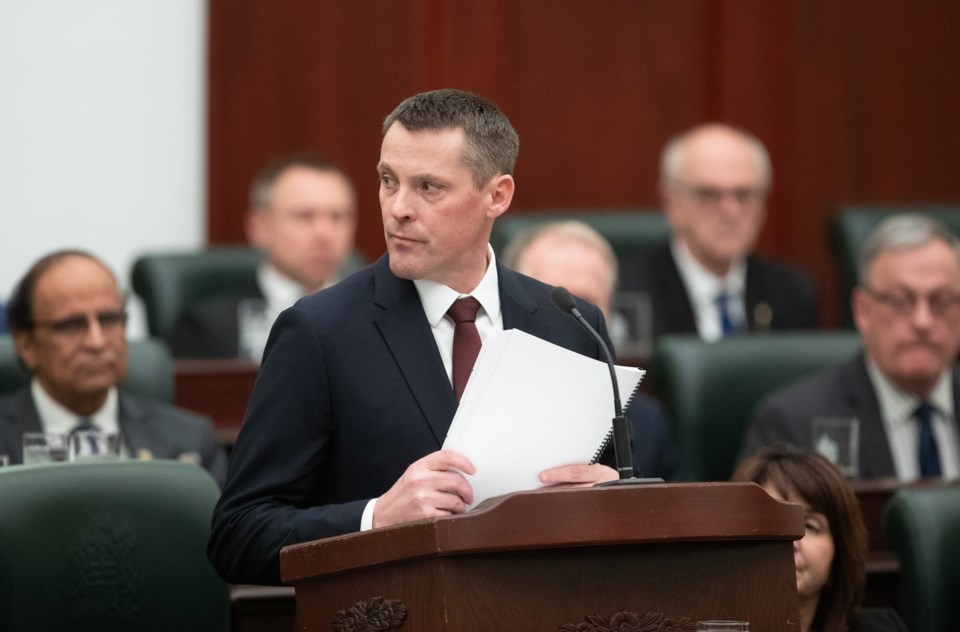EDMONTON — Alberta's first-quarter fiscal update shows the government expects a surplus of $2.9 billion but won't have surplus cash this year and will need to borrow hundreds of millions of dollars.
Finance Minister Nate Horner said it's an accounting surplus, meaning the money is tied up, so in the meantime the province will need to take on $641 million in short-term borrowing.
"After adjustments and calculations, we forecast we will be left with no surplus cash at the end of 2024-25," he said Thursday.
“That means we must be more measured and responsible in making budgetary decisions,” he said.
“We can't spend beyond our means today.”
The government has no plan to immediately introduce the personal tax cut Premier Danielle Smith promised in the 2023 election that could cost $1.4 billion.
"We're working on bringing in the personal income tax cut, hopefully by the next budget," said Horner.
The increase in the estimated surplus, up by $2.6 billion from only $367 million forecast in February's budget, is being driven largely by personal income taxes and higher-than-expected oil prices.
The province is pegging the average price of West Texas Intermediate oil to be US$76.50, up US$2.50 per barrel than what was forecast at budget.
In 2024-25, the government plans to spend $73.3 billion -- up $101 million from budget -- and rake in $76.2 billion in revenues.
Population growth in the province is expected to hit 4.6 per cent in 2024, and will continue to put pressure on hospitals, schools and other services.
"We remain steadfast in our promise to strengthen the health-care system and provide access to top quality education," he said.
As wildfires continue to hit the province, the cost of firefighting and emergency assistance costs is now at $573 million so far this year, leaving about $1.4 billion in a contingency fund for disasters.
The government is forecasting debt-servicing costs will be $3.2 billion, down $181 million from the budget.
Taxpayer-supported debt is estimated to be $86.1 billion as of March 2025, down $1.7 billion.
This report by The Canadian Press was first published Aug. 29, 2024.
The Canadian Press



